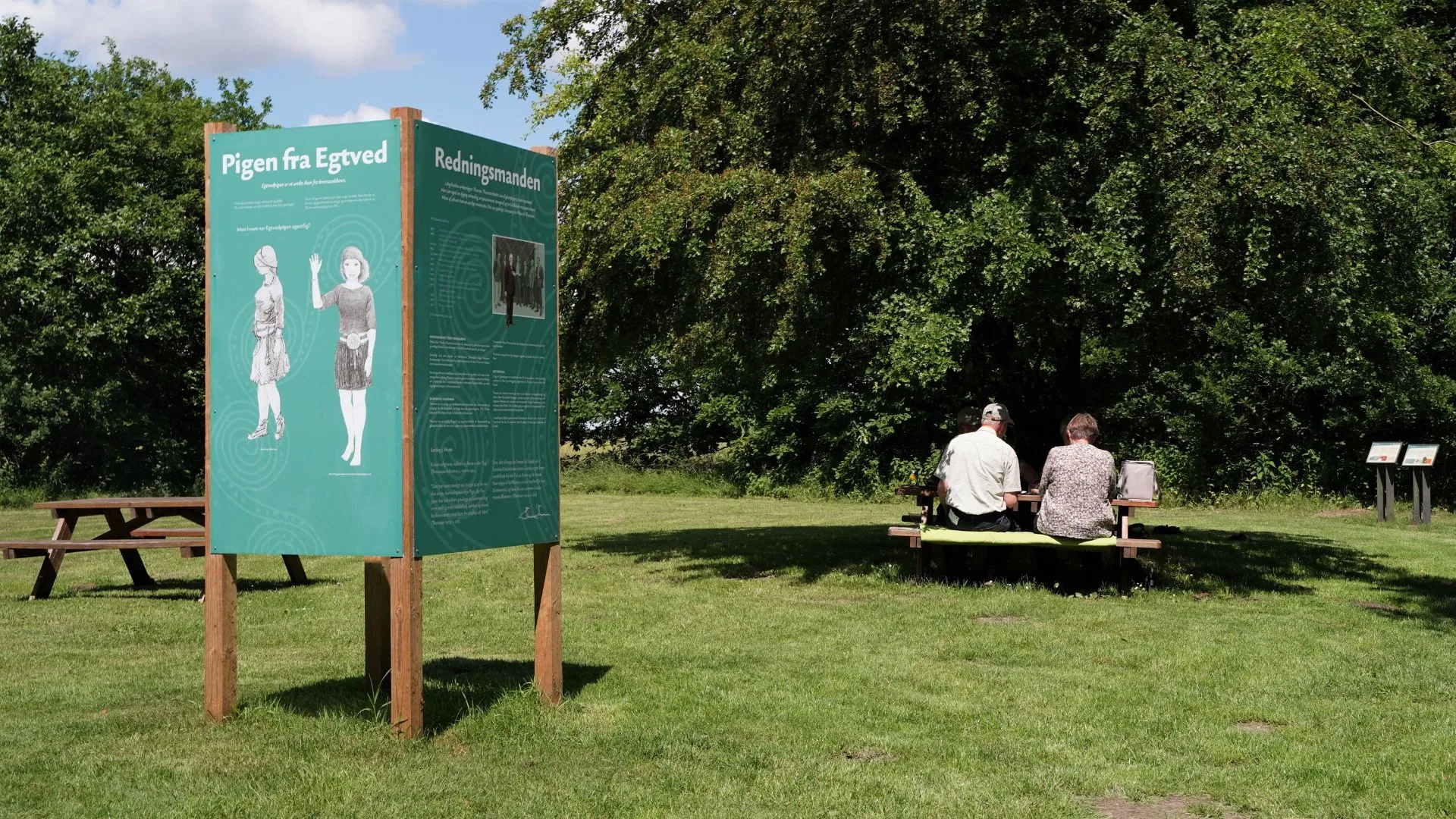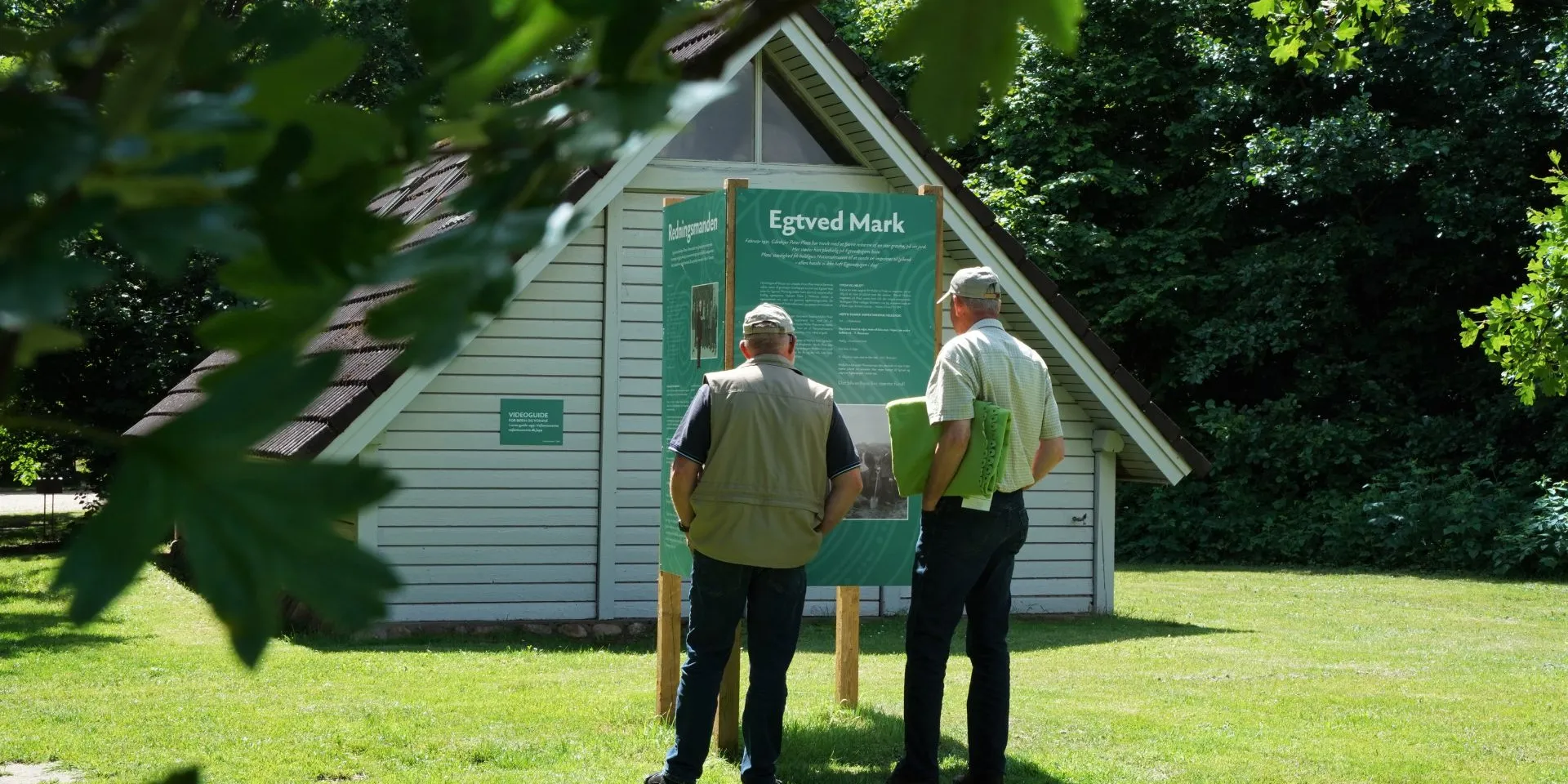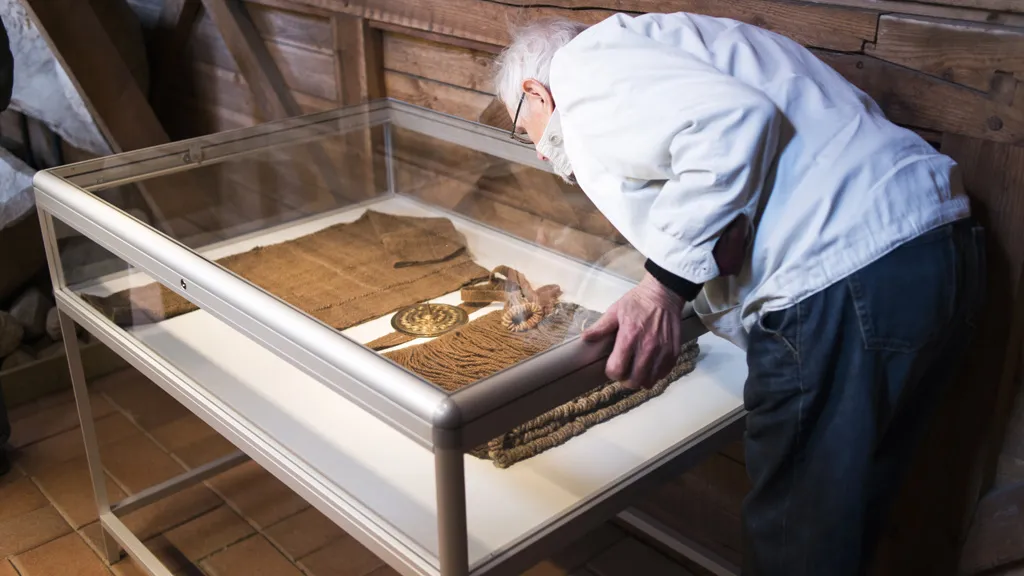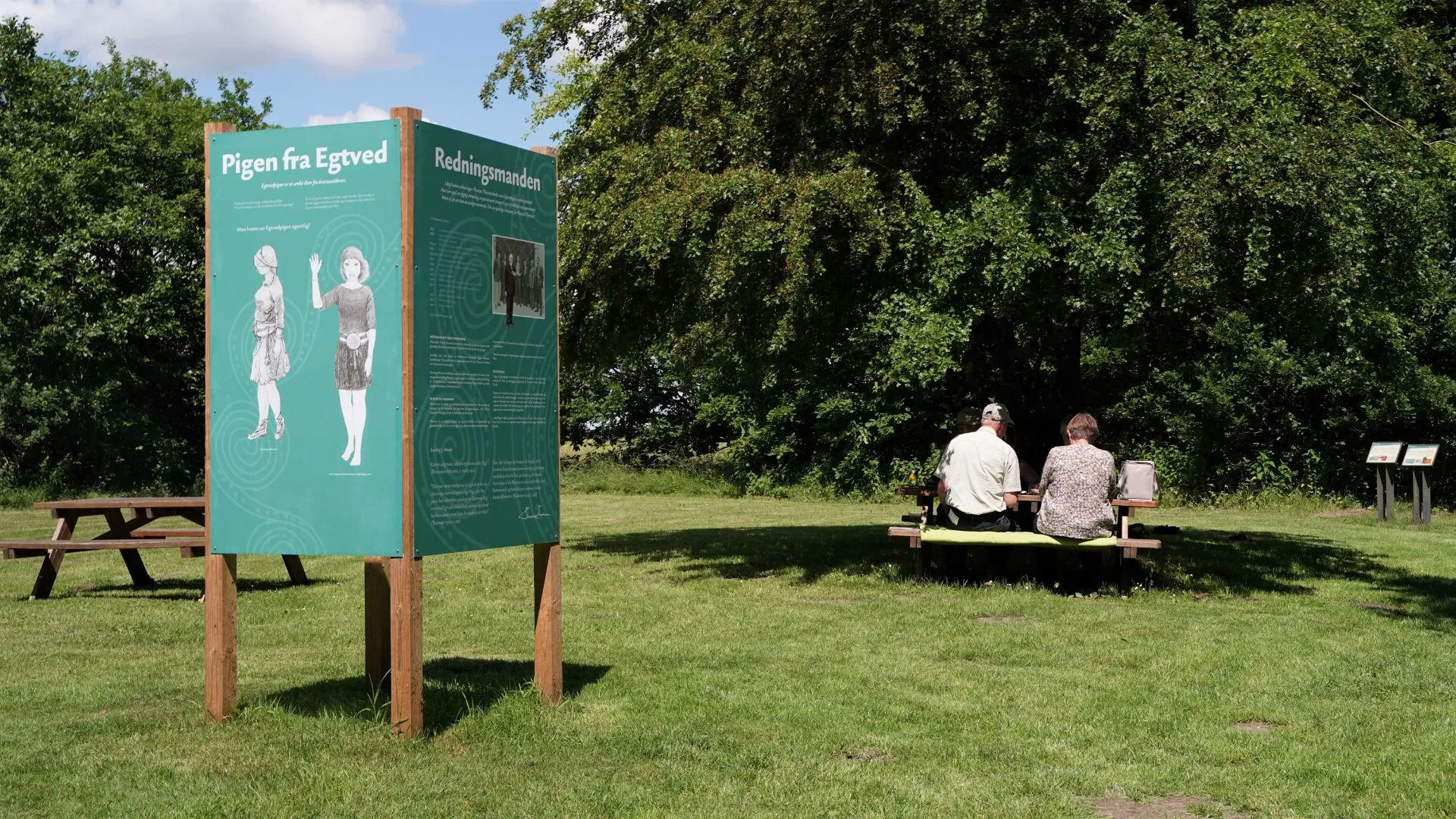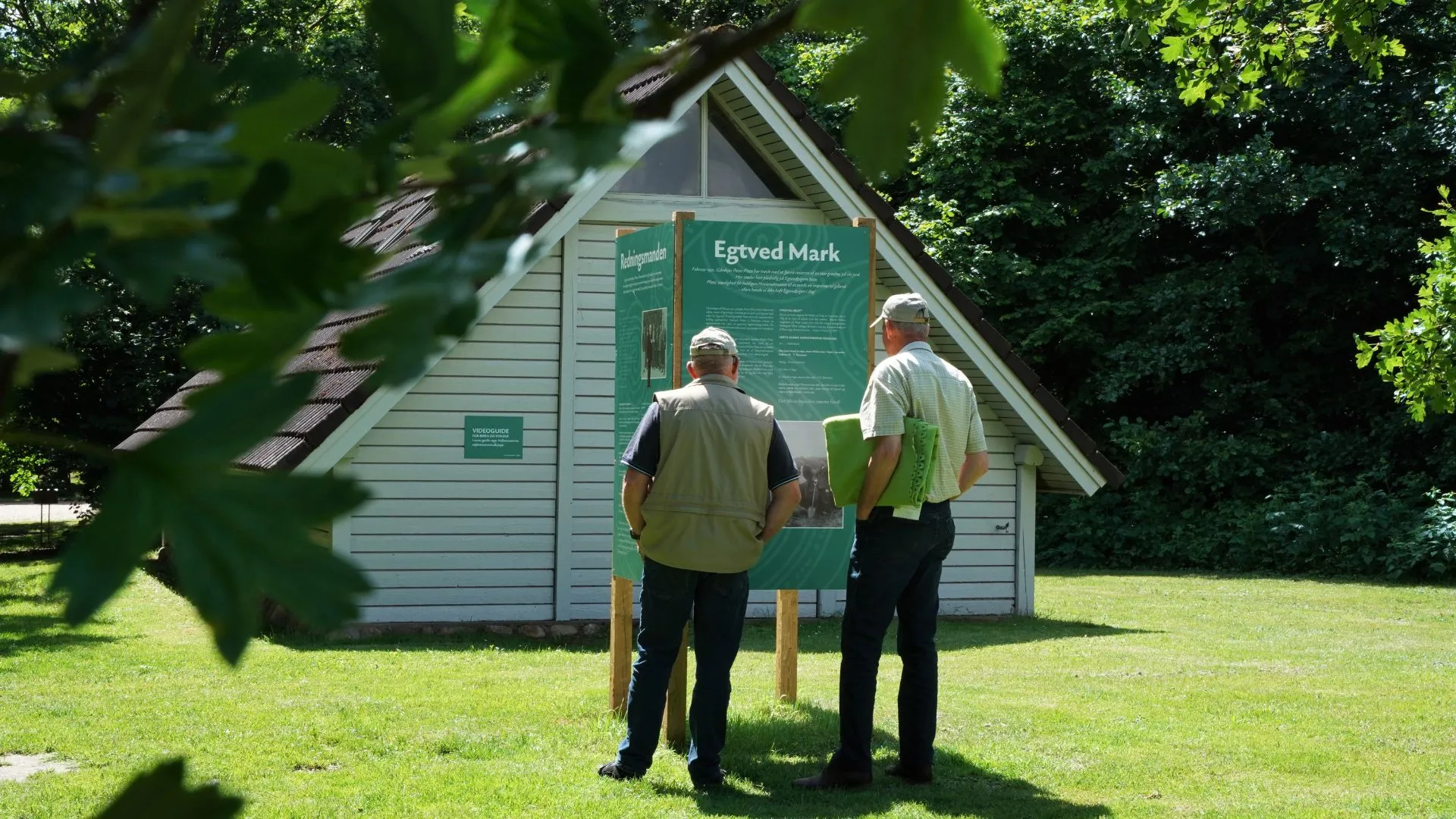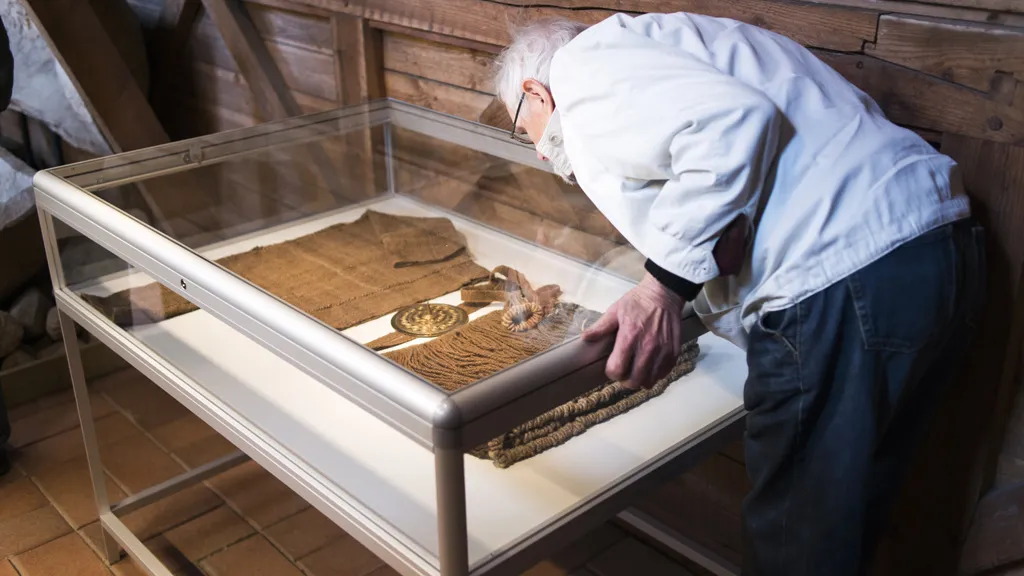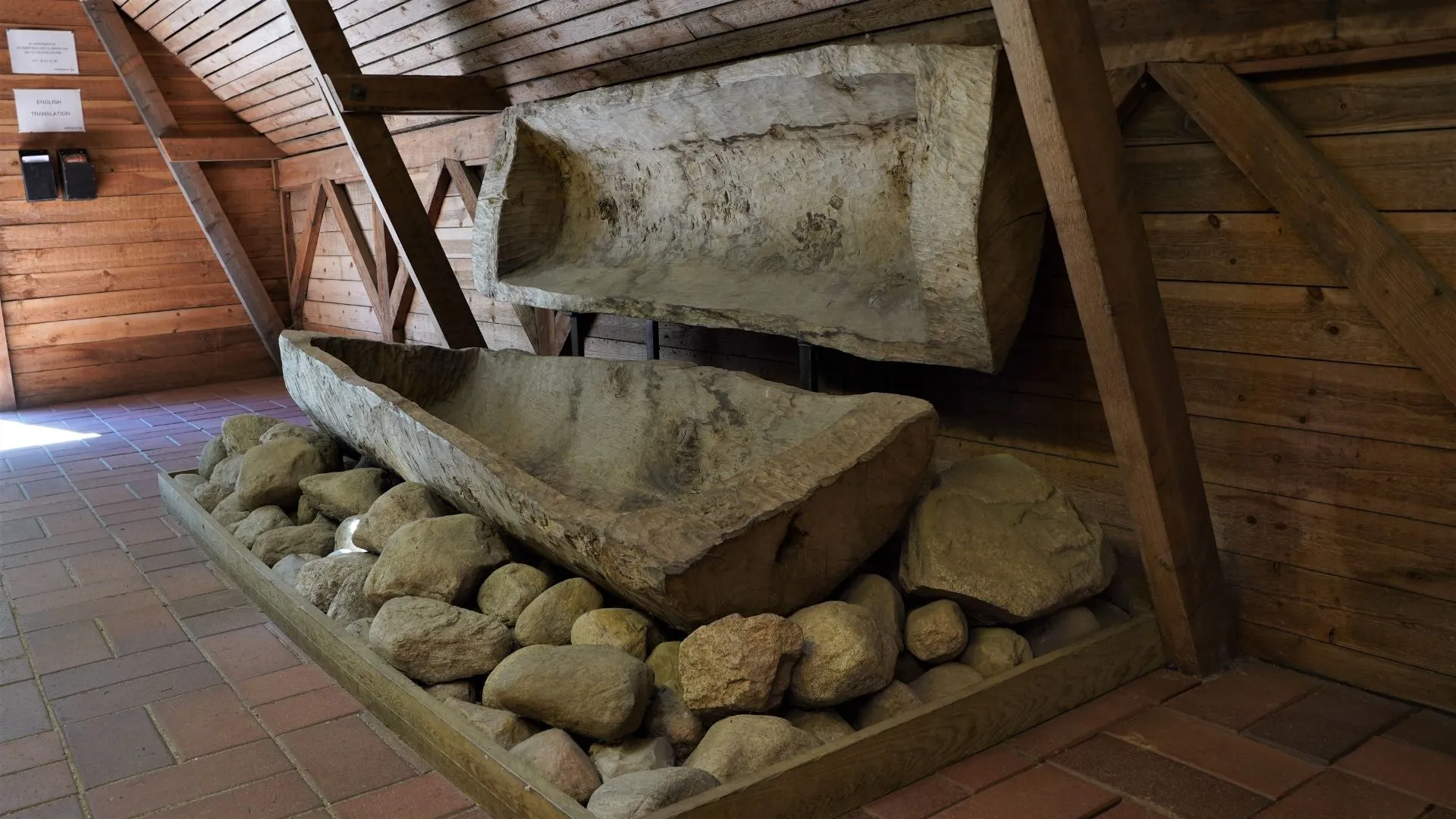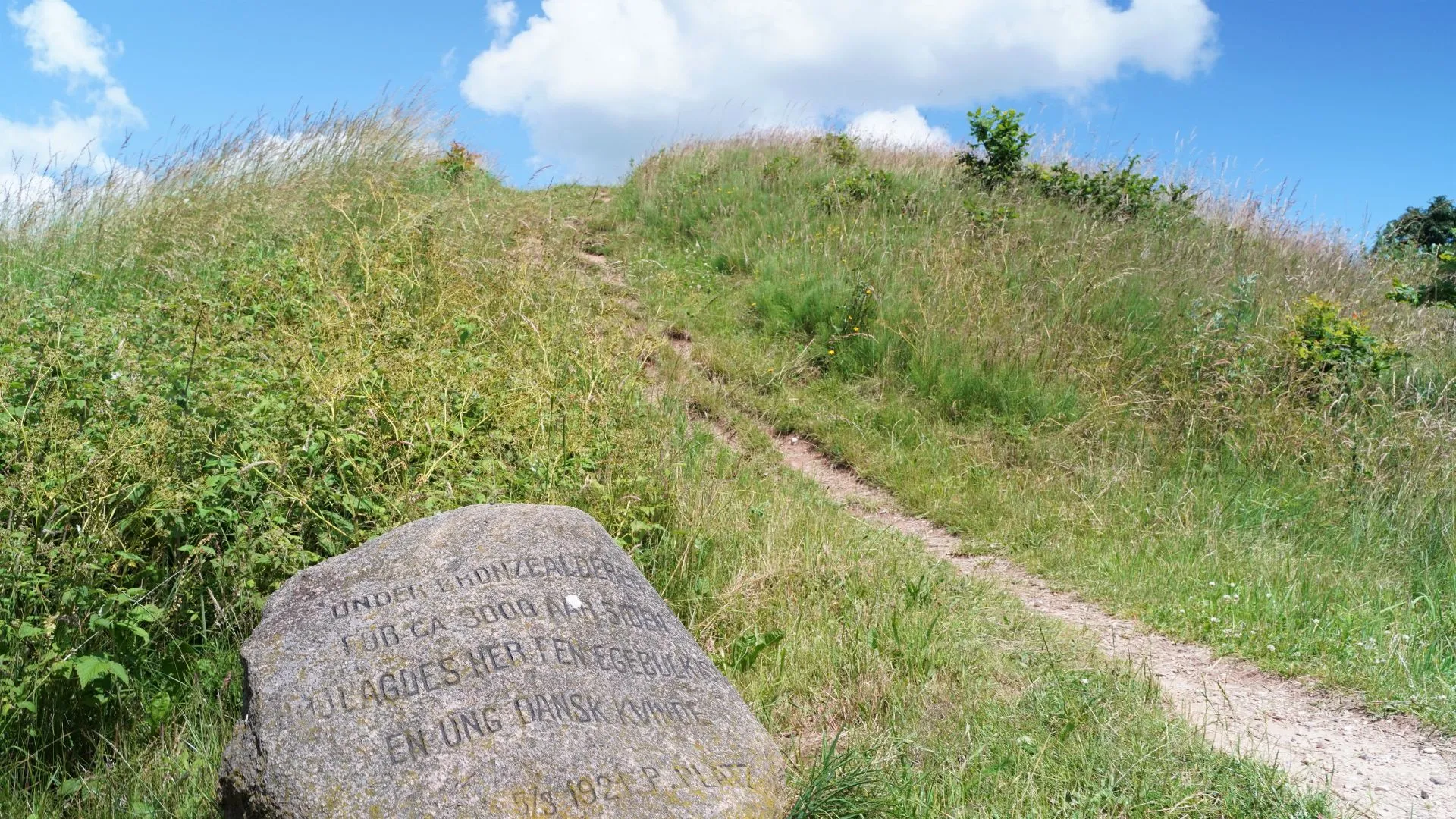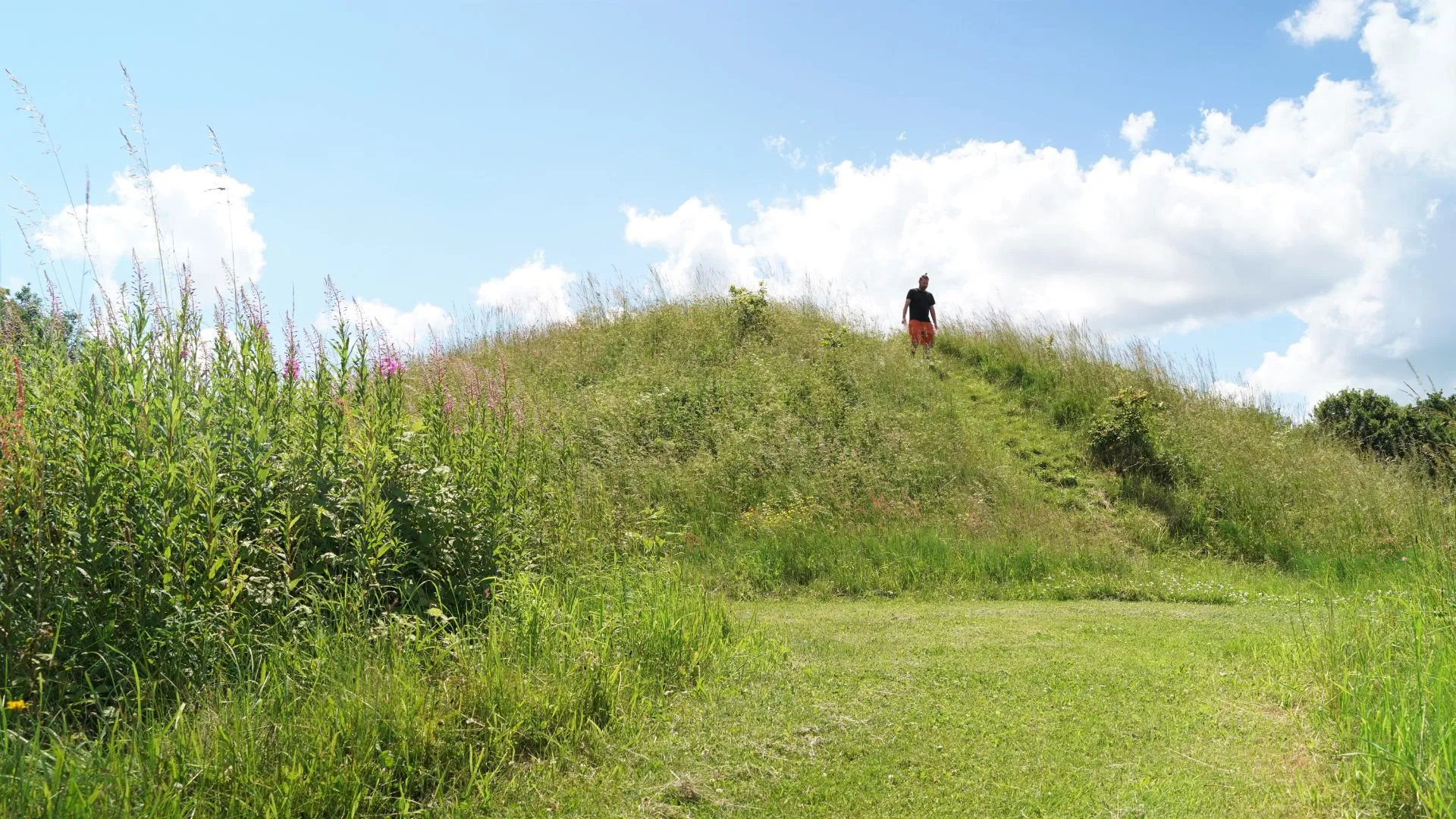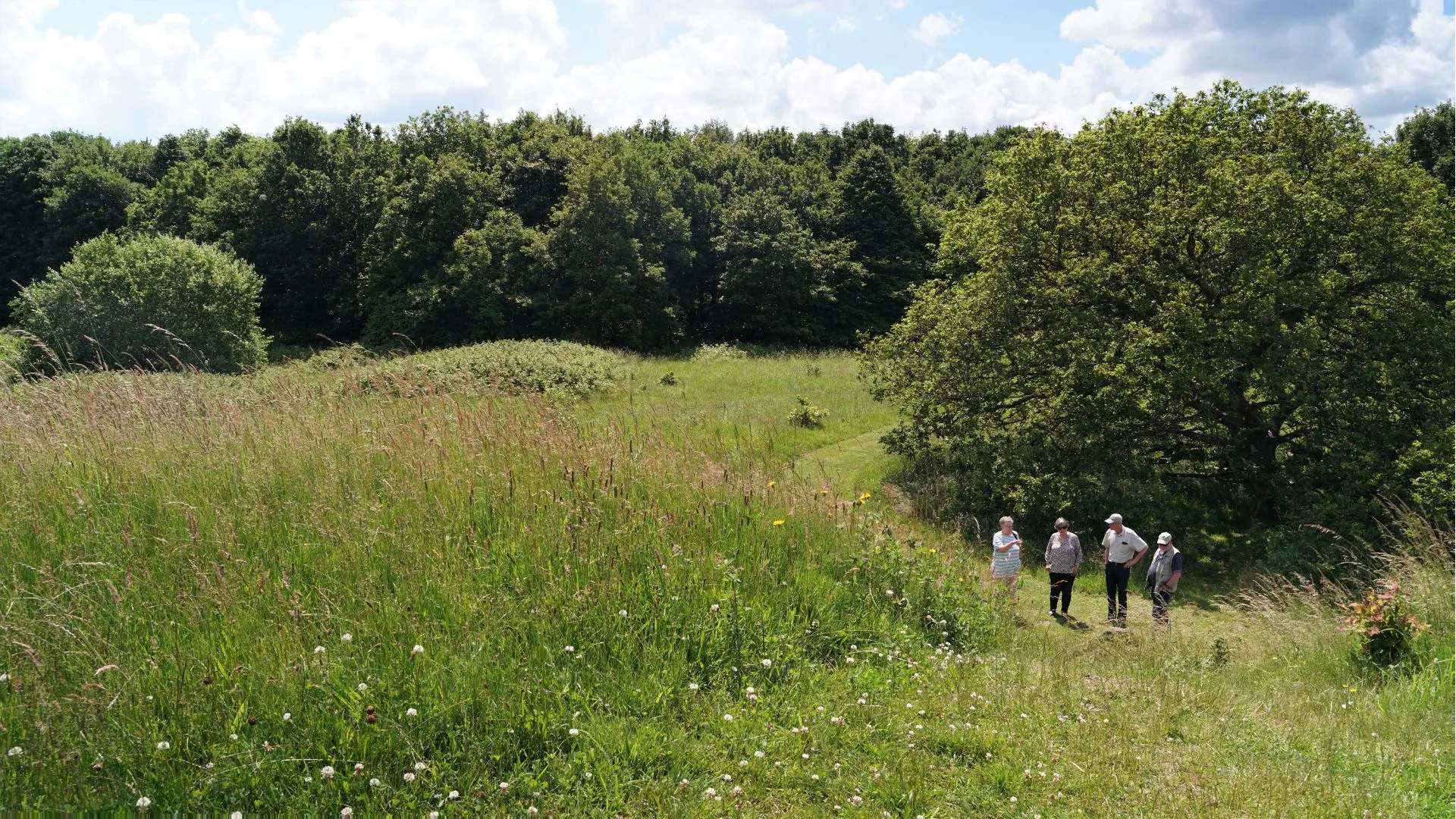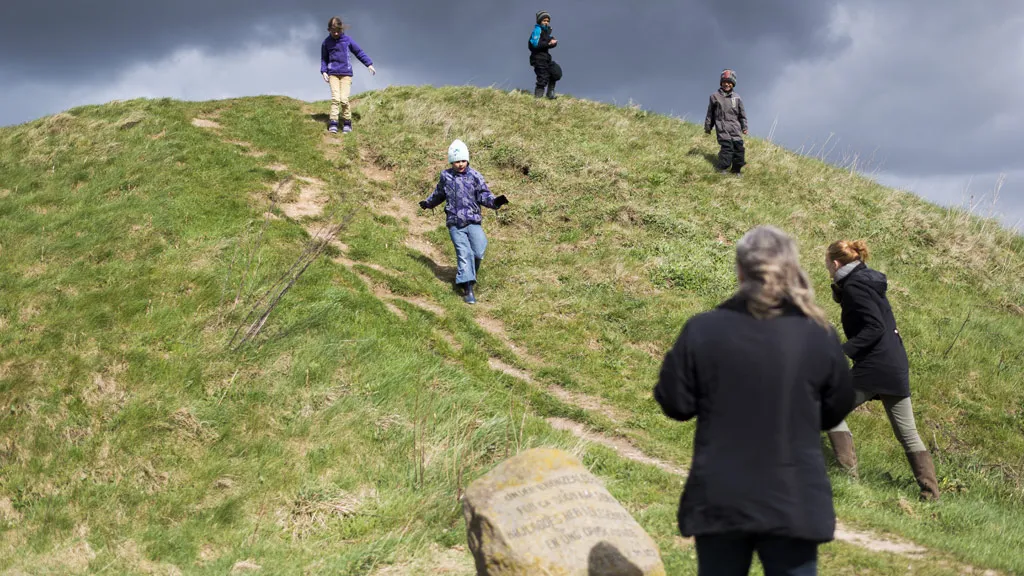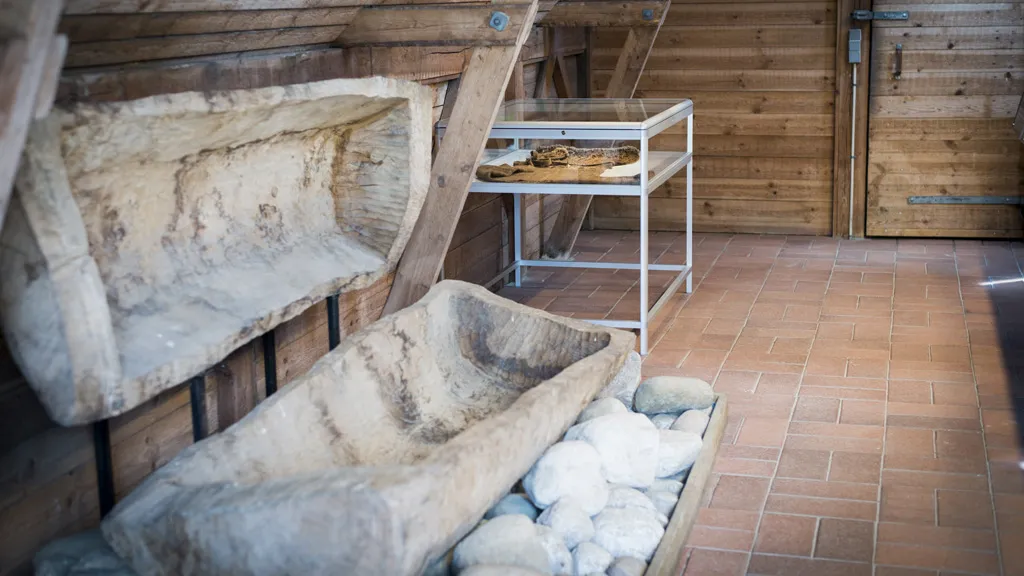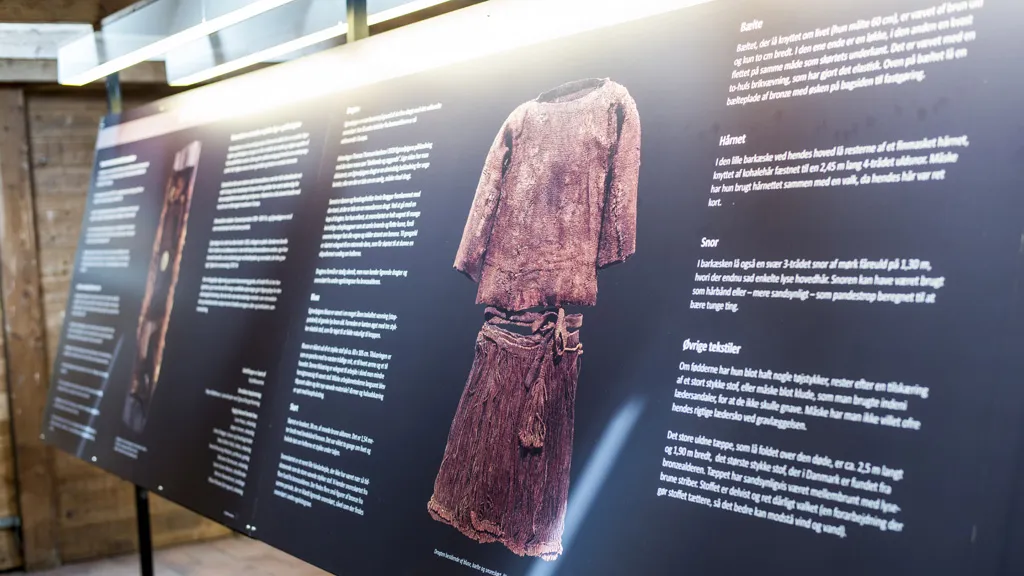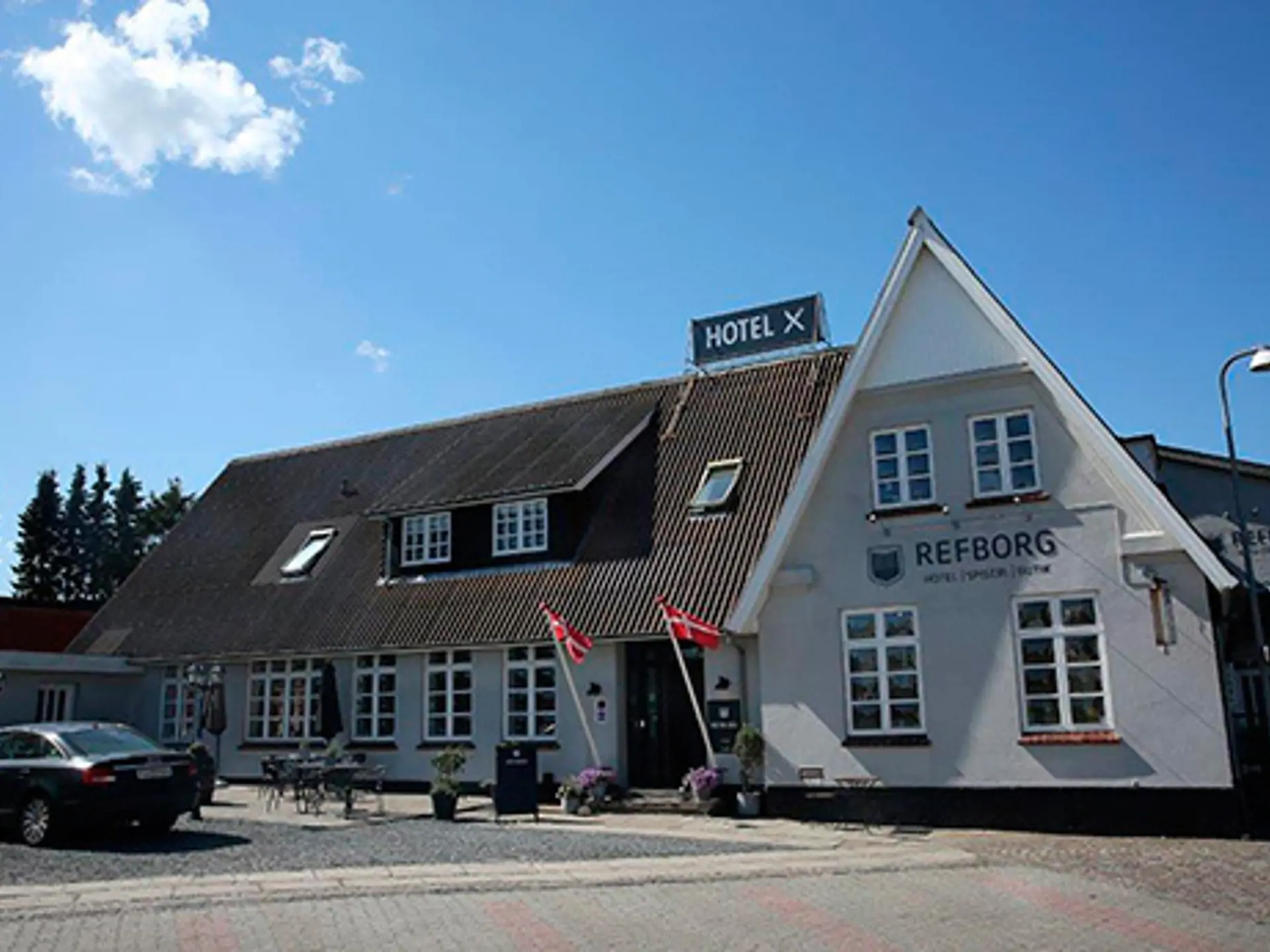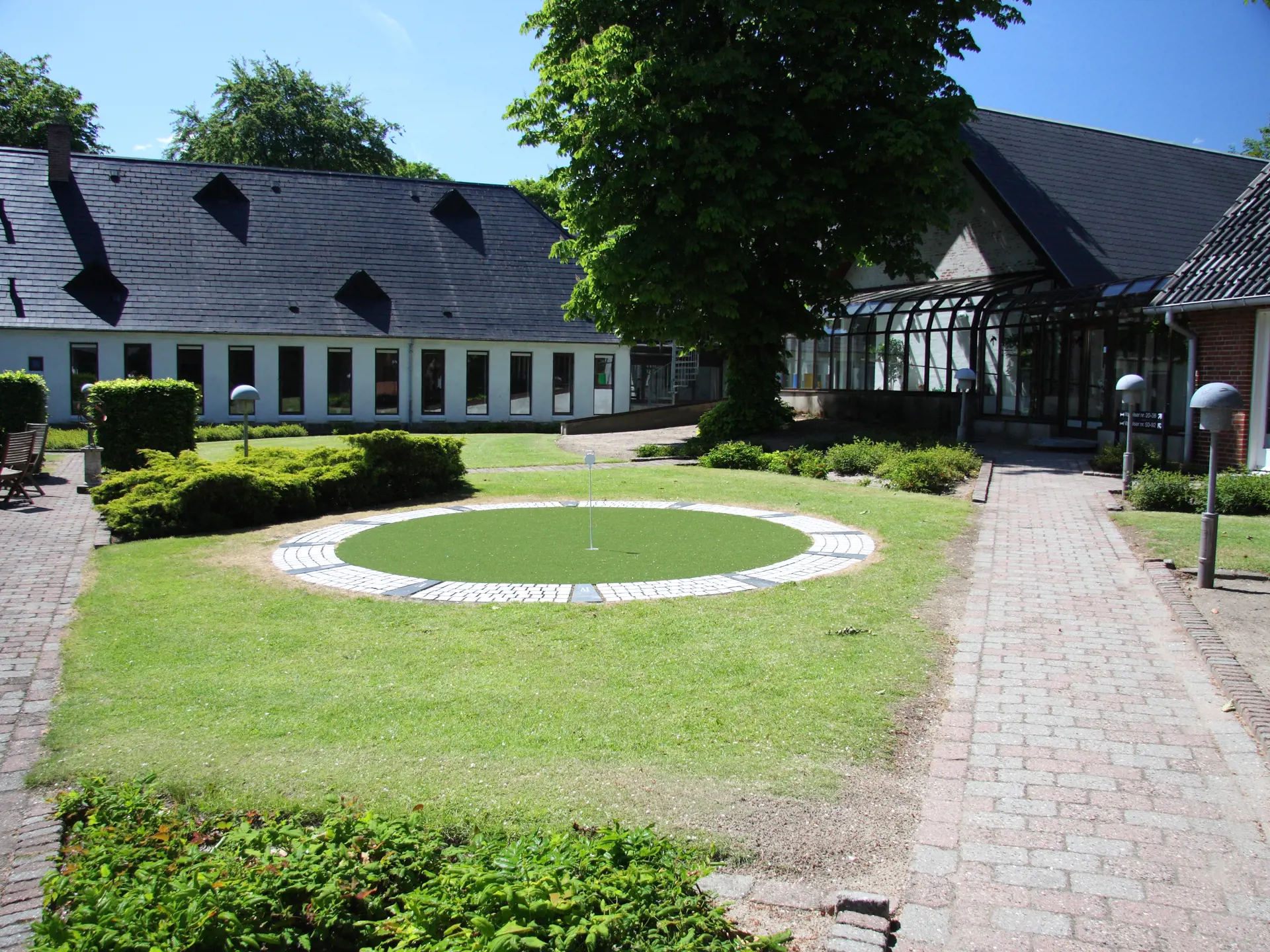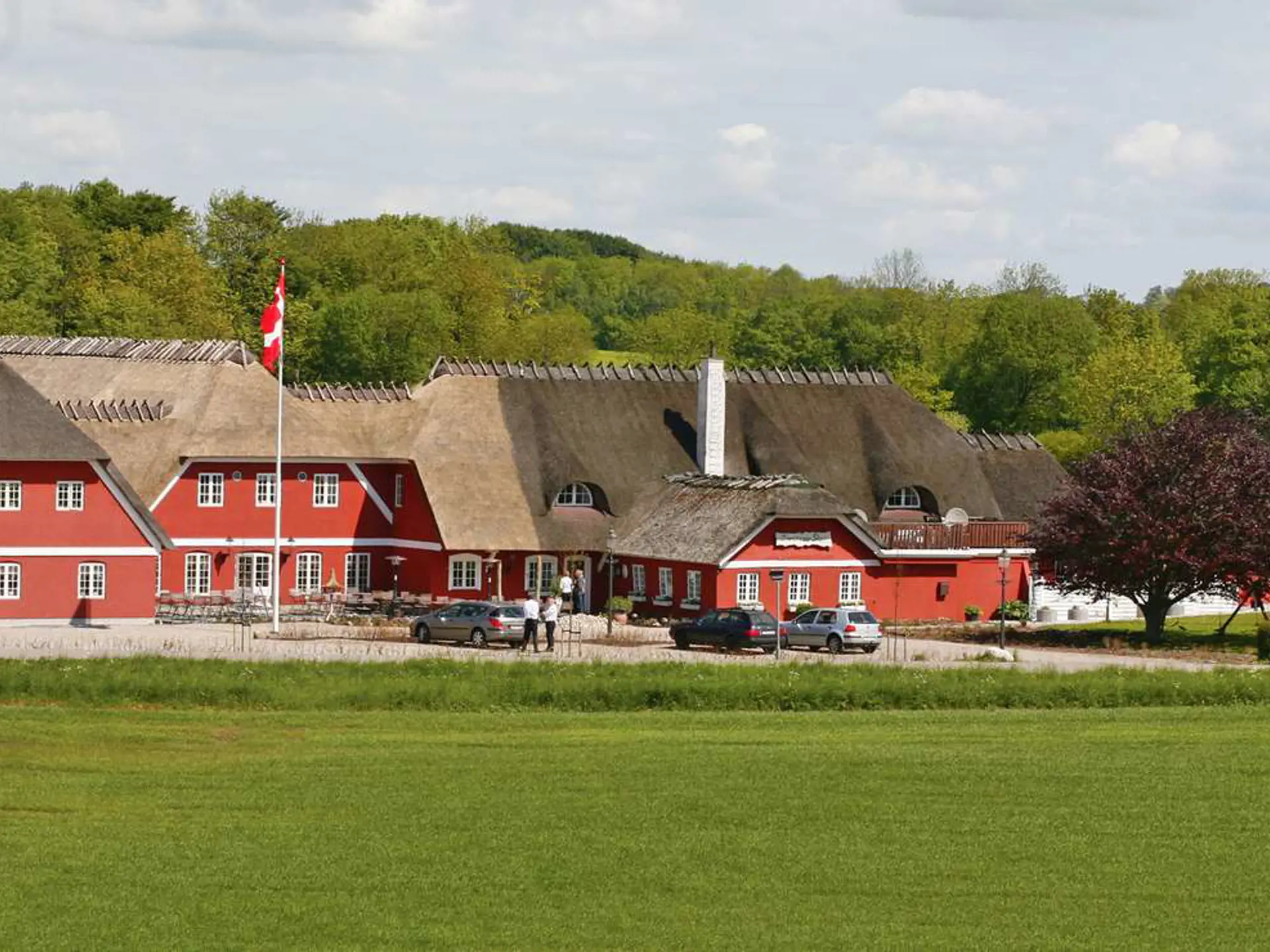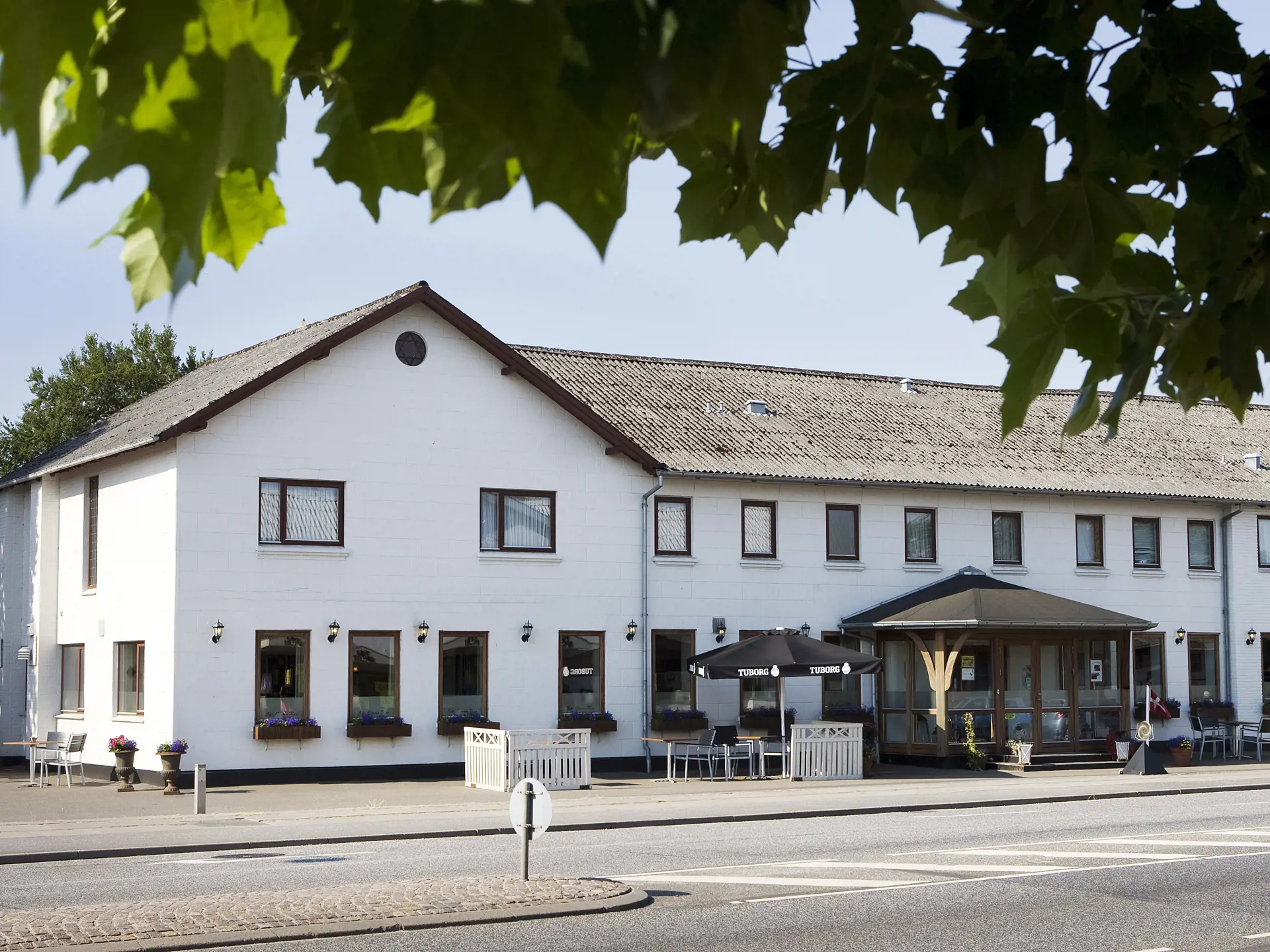The Egtved Girl was discovered on Thursday, February 24, 1921. Farmer Peter Platz was removing the last remnants of a burial mound on his field when he came across a heavily carved oak trunk.
The excavation was conducted by the National Museum, and thus the oak coffin was subsequently transported to Copenhagen. When opened, it revealed a cowhide bag at the top. Beneath it lay a woven blanket of brown wool, and beneath the blanket lay the deceased herself—a 160 cm tall young girl, her semi-long hair almost concealing her face, and a small bronze earring.
The girl later became known as the Egtved Girl.
Belt plate of bronze and cord skirt
She lay on her back, her skin well-preserved, but no bones remained. She wore a brown wool blouse, and on each wrist was a bronze ring. Under the blouse, the iconic bronze belt plate could be discerned. A skirt made of twisted brown woolen cords was wrapped twice around her waist.
At her left shin, there was a bundle of clothes containing the burnt bones of a 5-6-year-old child. At her feet stood a birch bark container with remnants of a kind of sweet honeyed beer.
A flowering yarrow in the coffin indicated that the burial took place in the summer months. The girl died at the age of approximately 16-18 years.
The World of The Egtved Girl: A new experience center in progress
The Vejle Museums are actively working on realizing a large new museum project that aims to tell the fascinating story of the Egtved Girl. Right there, where she was laid to rest on a summer day 3,500 years ago.
Note: The area around the burial mound and the old exhibition building is closed until the opening of the experience center, The World of The Egtved Girl.
The entire original Egtved find is exhibited at the National Museum in Copenhagen. So, you'll need to visit the capital to see Egtved Girl herself.
